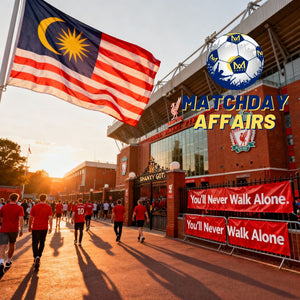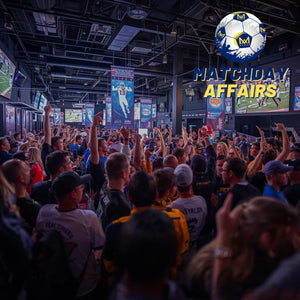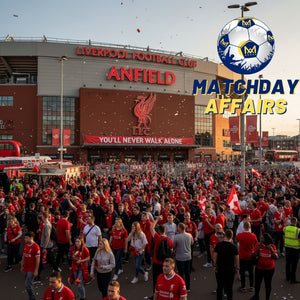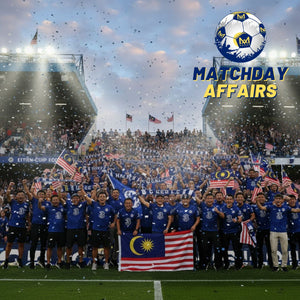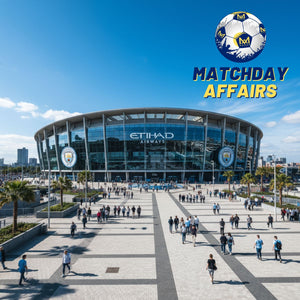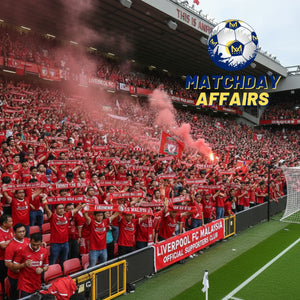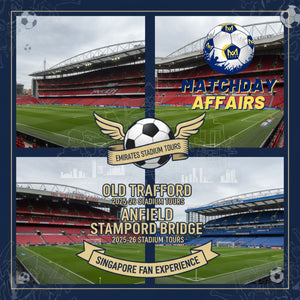
The January transfer window hasn't even opened yet, but one name dominates every Liverpool WhatsApp group, every Anfield pub debate, and every tactical analysis thread: Adam Wharton. The 21-year-old Crystal Palace midfielder has become the most talked-about transfer target in English football, and for Liverpool fans watching their team hemorrhage goals and lose midfield battles week after week, Wharton represents more than just another signing—he could be the difference between Champions League qualification and a season of devastating mediocrity.
As someone who's watched Liverpool struggle through four consecutive defeats for the first time since 2014, who's witnessed Ryan Gravenberch getting overrun in midfield, who's seen Arne Slot's £446 million summer spending spree fail to address the team's fundamental vulnerability, I'm convinced Wharton isn't just a luxury purchase. He's become an absolute necessity.
Why Liverpool's Midfield Crisis Demands Immediate Action
Let's be brutally honest about Liverpool's current situation. After spending nearly half a billion pounds in the summer, Arne Slot's midfield looks more confused than ever. The stats paint a dire picture that no amount of optimistic spin can disguise.
Ryan Gravenberch, positioned as Liverpool's defensive midfielder, completes just 68% of his tackles this season compared to 79% last year when playing in a more advanced role. His interceptions per 90 minutes (0.8) fall embarrassingly below the league average of 1.3 for his position. Alexis Mac Allister, forced into a No.6 role he's fundamentally unsuited for, looks like a fish out of water trying to shield the defense. Dominik Szoboszlai, despite boundless energy, appears on his heat map literally everywhere except where a No.8 should actually be—protecting the back four.
The result? Liverpool have conceded two or more goals in seven of their last 12 matches. They've shipped 41 goals already this season across all competitions. The defensive fragility that defined their humiliating defeats to Manchester United (1-2 at home), Manchester City (0-3), and Eintracht Frankfurt (1-5) stems directly from midfield that can't control games, can't screen the defense, and can't transition effectively between attack and defense.
Enter Adam Wharton—a player whose statistical profile suggests he could solve virtually every problem plaguing Liverpool's midfield.
The Adam Wharton Profile: Why He's Worth Every Penny
I'll admit something that might sound crazy to casual observers: Crystal Palace's £75 million asking price isn't remotely outrageous. In fact, given Wharton's age, contract situation, and performance metrics, it might actually represent decent value in today's inflated market.
Here's what makes Wharton special, backed by hard data rather than hyperbole.
At just 21 years old, Wharton has already accumulated 107 senior appearances across Blackburn Rovers and Crystal Palace. This season alone, despite limited minutes due to a groin injury that sidelined him for three months, he's created more chances (5) than any other player in the Premier League through the opening weeks. His 3.94 shot-creating actions per 90 minutes places him in the top 7% of midfielders across Europe's top five leagues, according to FBref's comprehensive database.
But here's what truly excites me as someone who understands Liverpool's tactical needs: Wharton combines elite defensive metrics with exceptional progressive passing—the exact profile Liverpool desperately lacks.
His defensive numbers stand out even in a struggling Palace side. With 81 ball regains this season, Wharton ranks 123rd among all Premier League players—remarkable for a 21-year-old midfielder who's missed significant time through injury. His tackle success rate and duels won percentage (77th percentile) demonstrate physical maturity beyond his years. Most importantly, his positioning sense and anticipation allow him to intercept passes and snuff out dangers before they fully develop, precisely the quality Gravenberch lacks.
Yet Wharton isn't just a defensive specialist. His 90.8% pass accuracy combined with progressive passing range makes him a genuine two-way midfielder. No player at Crystal Palace—a team that finished 10th last season—completes more line-breaking passes from deep positions. When you watch Wharton, you see a player who can collect the ball from center-backs, scan the field, and deliver diagonal switches that bypass entire midfield lines.
Compare this to Liverpool's current options, and the difference becomes stark. Mac Allister (68% tackle success) can't defend as a No.6. Gravenberch (0.8 interceptions per 90) can't screen effectively. Curtis Jones lacks the creative passing range. Szoboszlai's positional discipline is non-existent.
Wharton does everything. And he's only 21.
The Transfer Saga: Liverpool vs Manchester United vs Real Madrid
The competition for Wharton's signature has evolved into a genuine transfer war involving European football's elite. Understanding the dynamics of this race reveals why Liverpool need to act decisively in January rather than gambling on summer availability.
Liverpool's Position:
Multiple credible sources including This Is Anfield and DaveOCKOP report that Liverpool have identified Wharton as a priority target, with the player himself reportedly preferring Anfield over other suitors. This preference makes sense tactically—Arne Slot's system, despite current struggles, would suit Wharton's skill set perfectly. The Dutch manager employs a 4-3-3 or 4-2-3-1 formation requiring a defensive midfielder who can both shield the back four and initiate attacks with progressive passing. That's Wharton's exact profile.
However, Liverpool's current crisis creates urgency. Sitting 8th in the Premier League, eight points behind leaders Arsenal, Liverpool can't afford to wait until summer and risk missing out entirely. The Reds also face the complication of Barcelona's reported interest in Ryan Gravenberch for summer 2026, which could force Liverpool into replacing their current No.6 anyway.
For fans planning to witness this potential January unveiling live at Anfield, securing match tickets early becomes increasingly important as demand intensifies around transfer deadline day. There's nothing quite like experiencing a new signing's debut in person, especially when that player might define the club's trajectory for the next decade.
Manchester United's Threat:
According to The Daily Star and multiple UK outlets, Manchester United are preparing a £60 million bid for Wharton in January. Under intense pressure after their own disappointing start, United manager Ruben Amorim reportedly views Wharton as the ideal partner for Kobbie Mainoo in a restructured midfield. The £60 million figure represents a deliberate undervaluation designed to test Crystal Palace's resolve without triggering the full £75 million asking price.
The problem for United? They're fighting on multiple fronts themselves, desperately need defensive reinforcements, and may not have the financial flexibility to compete if Liverpool table a serious offer. Their recent £446 million spending spree on underwhelming signings also creates FFP concerns that could limit their January budget.
Real Madrid's Wild Card:
This is where the situation gets fascinating—and potentially terrifying for Liverpool fans. Spanish outlet AS and Defensa Central report that newly appointed Real Madrid manager Xabi Alonso has personally identified Wharton as his top midfield target to eventually replace the aging Luka Modric and departed Toni Kroos.
Madrid's legendary scout Juni Calafat has reportedly watched Wharton extensively, and the club has "sounded out his contract terms" according to multiple Spanish sources. While Madrid's reported €60-70 million valuation falls short of Palace's £75 million demands, their prestige and ability to offer Champions League football creates a compelling alternative to Liverpool's current struggles.
Here's the concerning part: if Liverpool delay until summer, Real Madrid will have finished their Champions League campaign, potentially won another La Liga title, and presented Wharton with the chance to replace Modric at the world's most successful club. That's a difficult counter-offer for Liverpool to match.
Other Interested Parties:
Manchester City, Chelsea, Tottenham, and Bayern Munich all monitor Wharton's situation, though none have progressed beyond initial scouting. City view him as a potential long-term Rodri successor. Chelsea's interest fits their strategy of stockpiling young Premier League talent. Tottenham simply can't compete financially with Liverpool or United.
Crystal Palace's Stance: The Release Clause Complication
Understanding Crystal Palace's negotiating position requires examining both their public statements and the contract situation that shapes this transfer.
Palace co-owner Steve Parish has been remarkably candid about Wharton's future. Speaking to talkSPORT in October, Parish admitted: "I think Adam Wharton at some point will want to play in the Champions League, either with Crystal Palace or with another club." That's as close to a green light as any chairman provides in modern football.
However, Palace aren't desperate sellers. Wharton signed a 5.5-year contract in February 2024, tying him to Selhurst Park until June 2029. This provides Palace with substantial leverage—they're under absolutely zero pressure to sell in January, especially mid-season when finding a replacement becomes exponentially harder.
The current contract discussions add another layer of complexity. According to The Daily Mail and BBC Sport, Palace are offering Wharton improved terms potentially including a release clause. This mirrors the Eberechi Eze situation from summer 2025, when Palace inserted a £68 million release clause that ultimately saw Arsenal sign him for £67.5 million after negotiations.
Transfer reporter Ben Jacobs, speaking on The United Stand, revealed a crucial detail: Wharton and Palace have a "gentleman's agreement" that if he doesn't sign a new contract, they'll accept offers in the £60-65 million range. This creates three possible scenarios:
-
Wharton signs new deal with £90+ million release clause (BBC Sport's reported figure)
-
Wharton doesn't renew, activating £60-65 million gentleman's agreement
-
Palace hold firm at £75 million for immediate January sale
For Liverpool, option three represents the most realistic January pathway. Palace might grudgingly accept £70-72 million with add-ons, knowing that Wharton's value only increases if he stays fit and performs well through the season.
Wharton vs Gravenberch: A Tactical Comparison
As someone who's watched every Liverpool match this season, often through fingers covering my eyes during defensive transitions, I need to address the elephant in the room: what happens to Ryan Gravenberch if Wharton arrives?
The Dutch midfielder arrived from Bayern Munich with enormous potential, and last season under Klopp, he occasionally showcased the dynamic box-to-box qualities that justified his signing. But this season, forced into a No.6 role he's fundamentally unsuited for, Gravenberch looks lost.
Let's examine their profiles side-by-side:
Defensive Metrics (Per 90 Minutes):
| Metric | Wharton (2025/26) | Gravenberch (2025/26) |
|---|---|---|
| Tackles | 4.1 | 2.3 |
| Interceptions | 1.9 | 0.8 |
| Ball Regains | 9.3 | 5.1 |
| Duels Won % | 77th percentile | 51st percentile |
| Aerial Duels Won % | 62% | 45% |
The numbers reveal a stark truth: Wharton is simply a better defensive midfielder. His positioning, anticipation, and reading of the game allow him to make interventions earlier in the danger sequence. Gravenberch, by contrast, often finds himself chasing the play after attackers have already penetrated Liverpool's midfield line.
Creative Output:
| Metric | Wharton | Gravenberch |
|---|---|---|
| Chances Created | 5 (most in PL) | 2 |
| Shot-Creating Actions | 3.94 per 90 | 2.1 per 90 |
| Progressive Passes | 6.8 per 90 | 5.2 per 90 |
| Pass Accuracy | 90.8% | 91% |
Here's where it gets interesting. Both players demonstrate excellent ball retention (similar pass accuracy), but Wharton creates significantly more for teammates. His ability to spot and execute line-breaking passes makes him dangerous in ways Gravenberch simply isn't.
The solution? Wharton plays as the No.6, shielding the defense and initiating attacks. Gravenberch moves to his natural No.8 role alongside Mac Allister, where his carrying ability and 91% pass accuracy become assets rather than liabilities. This fixes Liverpool's defensive fragility while actually improving their attacking threat through better midfield balance.
Barcelona's reported interest in Gravenberch for summer 2026 might even provide Liverpool with an elegant exit strategy if the Dutchman struggles to adapt. Sell Gravenberch for £50-60 million, partially funding the Wharton deal while solving the positional conundrum.
Is £75 Million Too Much?
This is the question dividing Liverpool's fanbase, and I understand both perspectives. £75 million represents substantial money, especially after the £446 million summer splurge that's yielded minimal improvement.
But let me frame this differently: what's the cost of not signing Wharton?
Missing Champions League qualification costs Liverpool approximately £50-60 million in prize money and broadcasting revenue. The reputational damage makes future recruitment harder. Sponsors negotiate lower deals. Season ticket renewal rates decline. The entire economic model of a top-four club starts crumbling.
Liverpool currently sit 8th, having lost to Manchester United and Crystal Palace at Anfield. The defensive fragility stems directly from midfield that can't control games. Without a defensive midfielder who can both shield the back four and progress the ball, Liverpool will continue hemorrhaging goals and points.
Now consider Wharton's profile: 21 years old with a decade of potential peak years ahead. English, meaning no work permit concerns or adaptation period to the Premier League's intensity. Already proven at the highest domestic level with FA Cup and Community Shield winners' medals. Under contract until 2029, providing long-term security. Genuinely elite at both defensive and progressive aspects of midfield play.
Compare this to Liverpool's alternatives. Signing a 27-year-old for £50 million gives you maybe 3-4 peak years. Waiting for an unknown €30 million prospect from La Liga or Bundesliga involves substantial adaptation risk. Persisting with the current setup guarantees continued defensive disasters.
From this perspective, £75 million for Wharton actually represents smart business. Break it down over a theoretical 8-10 year Liverpool career, and you're paying £7.5-9.4 million per season for an elite midfielder during his prime years. That's the annual wage of a good player, not the transfer fee for a great one.
Additionally, Crystal Palace's asking price creates useful context. They valued Eberechi Eze at £68 million last summer. Michael Olise went to Bayern Munich for £50 million. Marc Guehi was priced at £65 million before Arsenal signed him. Palace consistently achieve premium valuations for academy graduates and young talents.
Wharton's £75 million price tag reflects several factors: Premier League premium (domestic clubs always pay more), remaining contract length (4+ years), English nationality (adds £10-15 million), age (prime resale value), and genuine elite potential. Transfermarkt's €45 million valuation feels conservative given these considerations.
The real question isn't whether £75 million is too much. It's whether Liverpool can afford NOT to spend it.
January vs Summer: Timing the Move
Here's where Liverpool face their most critical strategic decision. Do they pay premium prices to secure Wharton in January, or gamble on summer availability at potentially lower cost?
The Case for January:
Liverpool's season is actively imploding. Eight points behind Arsenal with a quarter of the season complete, defensive disasters occurring weekly, and genuine risk of missing top four entirely. Waiting until May might mean Wharton becomes a Championship signing rather than a Champions League one.
Financially, January signing provides immediate return on investment. If Wharton helps Liverpool secure fourth place, the £50-60 million Champions League revenue effectively pays 70-80% of his transfer fee. The accounting makes sense when framed as insurance against catastrophic underperformance.
Competition dynamics also favor January. Manchester United won't have £75 million in January after their summer spending. Real Madrid historically avoid mid-season disruption. Liverpool would face primarily Chelsea as serious rivals, and Palace prefer not selling to direct London competitors.
Psychologically, a statement signing in January could galvanize Liverpool's season. New signings create optimism, renewed focus, and tactical possibilities. Wharton's arrival might unlock better performances from Gravenberch (moved to No.8), Salah (better midfield protection), and Isak (more service through progressive passing).
The Case for Summer:
Crystal Palace will categorically not sell Wharton in January unless an absolutely ludicrous offer arrives (think £90-100 million). They're 3rd in the table with genuine European qualification ambitions. Selling their best midfielder mid-season while competing for continental football would be organizational malpractice.
Summer offers Palace time to identify and sign a replacement, potentially negotiate the gentleman's agreement £60-65 million price, and conclude Wharton's contract discussions. If he signs a new deal with a release clause around £90 million, Liverpool could still trigger it and guarantee signing him ahead of competitors.
The financial picture changes in summer too. Liverpool will know their final league position, Champions League status, and available budget after player sales. They might sell Gravenberch to Barcelona (£50-60 million), Curtis Jones (£20-25 million), or other fringe players to fund the deal.
From a pure squad planning perspective, summer allows proper preseason integration. Wharton arrives for day one of training, learns Slot's system thoroughly, and starts the season as automatic first choice rather than trying to fix problems mid-campaign.
My Take:
Liverpool should attempt a January move but prepare for summer negotiation. Submit a £70 million bid in January with clear add-ons reaching £75 million. Force Palace to make a decision: reject it and risk losing Wharton to summer release clause activation, or accept premium money now.
If Palace refuse (likely), Liverpool pivot to identifying emergency defensive midfielder loans and regroup for aggressive summer pursuit. The key is making clear to Wharton and his representatives that Liverpool are serious, committed, and willing to pay—establishing first-mover advantage over Real Madrid and United.
What This Means for Liverpool's Season and Match-Going Experience
Let's play out both scenarios, particularly considering what this means for those of us who actually attend matches rather than just watching on TV.
Scenario One: Liverpool Sign Wharton in January
Immediate tactical upgrade occurs. Slot switches to 4-3-3 with Wharton as No.6, Gravenberch and Mac Allister as No.8s. The midfield suddenly has defensive screening (Wharton's 9.3 ball regains per 90), progressive passing (Wharton's top-7% shot-creating actions), and better balance.
Defensively, Van Dijk and Konate receive actual protection. The catastrophic transitions that led to Man United and Man City defeats get mitigated by Wharton's positioning and anticipation. Liverpool's goals conceded per game drops from 1.52 to somewhere around 1.0-1.2.
Offensively, Salah benefits from better service through central areas. Isak gets more opportunities created by Wharton's line-breaking passes. Gravenberch, freed from defensive responsibilities, showcases his carrying and dribbling.
For those attending matches at Anfield, the atmosphere transforms. Instead of nervous tension every time opponents counter-attack, you'd see controlled dominance. The Kop would have something to genuinely celebrate beyond desperate late equalizers. Premium hospitality experiences would actually showcase Liverpool at their best rather than their most fragile.
Result: Liverpool finish 4th, qualify for Champions League, save the season.
Scenario Two: Liverpool Don't Sign Anyone
The midfield crisis continues. Gravenberch keeps getting overrun. Mac Allister struggles at No.6. The defensive fragility persists.
Liverpool drop more points to lower-table teams (West Ham, Leeds, Sunderland). The gap to fourth place widens to 10-12 points by March. Slot's job security faces questions.
Match-going fans would endure excruciating 90 minutes watching Liverpool dominate possession but concede from counter-attacks, set pieces, and defensive lapses. The walk from stadium to car park would become funeral marches rather than celebrations. Season ticket holders would question their investment.
Summer becomes crisis management: no Champions League means reduced revenues, difficult sales, and missing out on top targets (Wharton chooses Real Madrid over Europa League Liverpool). The entire project stalls.
Result: Liverpool finish 6th, miss Champions League, enter institutional decline.
The difference between these scenarios? One £75 million transfer.
Experience Liverpool's Potential Transformation Live
While we debate Wharton's potential impact through statistics and tactical analysis, nothing compares to witnessing such transformative signings in person. If you've been considering attending Liverpool matches this season—whether it's Wharton's potential debut or simply experiencing Anfield's electric atmosphere—the coming months represent a pivotal moment in the club's history.
For international supporters planning their first Anfield pilgrimage or regulars looking to enhance their matchday experience, specialized football travel services can simplify everything from securing those elusive tickets to arranging stadium tours and local accommodations. There's something profound about standing in the Kop when a new signing takes the field for the first time, sensing the collective hope of 50,000 voices willing this player to become the solution we desperately need.
Whether Wharton arrives in January or summer, whether Liverpool secure Champions League football or face Europa League mediocrity, the matches themselves remain unmissable spectacles. And if you're going to invest time and money attending Premier League football, why not do it properly? Comprehensive matchday packages remove the stress of planning, letting you focus entirely on the football itself.
Conclusion: The Transfer That Defines Liverpool's Future
I started following Liverpool seriously during the 2019 Champions League final. I watched the club transform from nearly-men to European and world champions under Klopp. I celebrated the 2024 Premier League title. And now I'm watching, with growing dread, as Slot's £446 million experiment threatens to derail everything.
Adam Wharton isn't just another midfielder. He's not another luxury signing for depth. He's the structural solution to Liverpool's fundamental problem: an inability to control games from midfield while maintaining defensive solidity.
At £75 million, he's expensive. But in the context of modern football economics, Champions League qualification requirements, and genuine elite potential, he's actually appropriate value. Crystal Palace won't budge significantly from this price. Real Madrid, Manchester United, and Chelsea won't disappear as competitors.
Liverpool need to make a decision. Pay the money. Sign the player. Fix the midfield. Save the season.
Because if they don't, when Wharton lifts the Champions League trophy in Real Madrid white three years from now, Liverpool will rue the day they chose financial caution over footballing necessity.
The window opens in 51 days. For those planning to witness this critical period live, securing your Anfield experience now ensures you don't miss potentially historic moments. Whether it's Wharton's debut, a crucial relegation battle, or the resurgence that saves Liverpool's season, these matches demand to be witnessed in person.
Make it count, Liverpool. The future is watching.
Our Matchday Experiences
Immerse yourself in the passion and atmosphere of England's greatest football stadiums
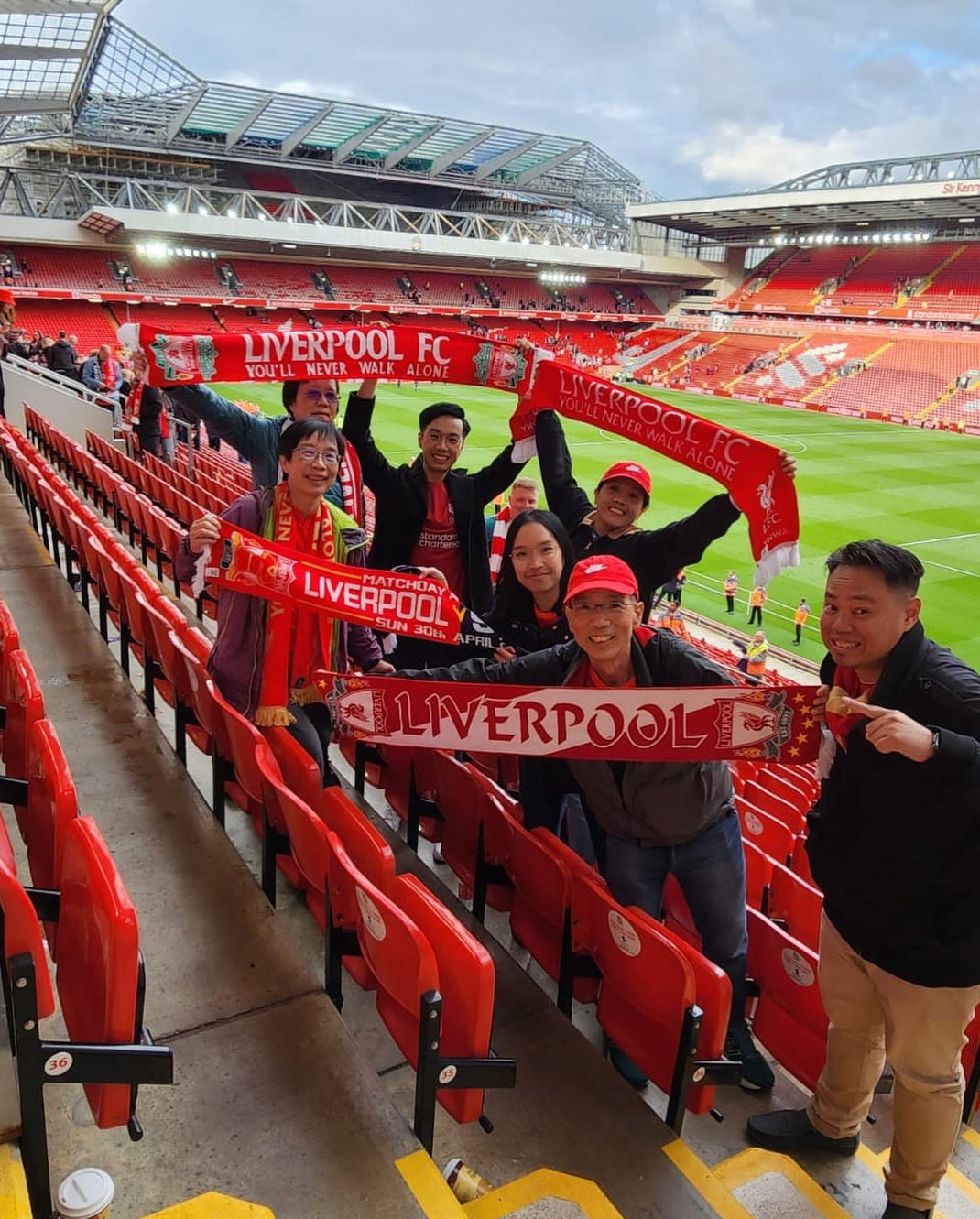
Anfield Expedition
Experience Anfield like never before: match tickets, tours, and the electric atmosphere of Liverpool FC
Explore Experience
Old Trafford Experience
Pair text with an image to focus on your chosen product, collection, or blog post. Add details on availability, style, or even provide a review.
Explore Experience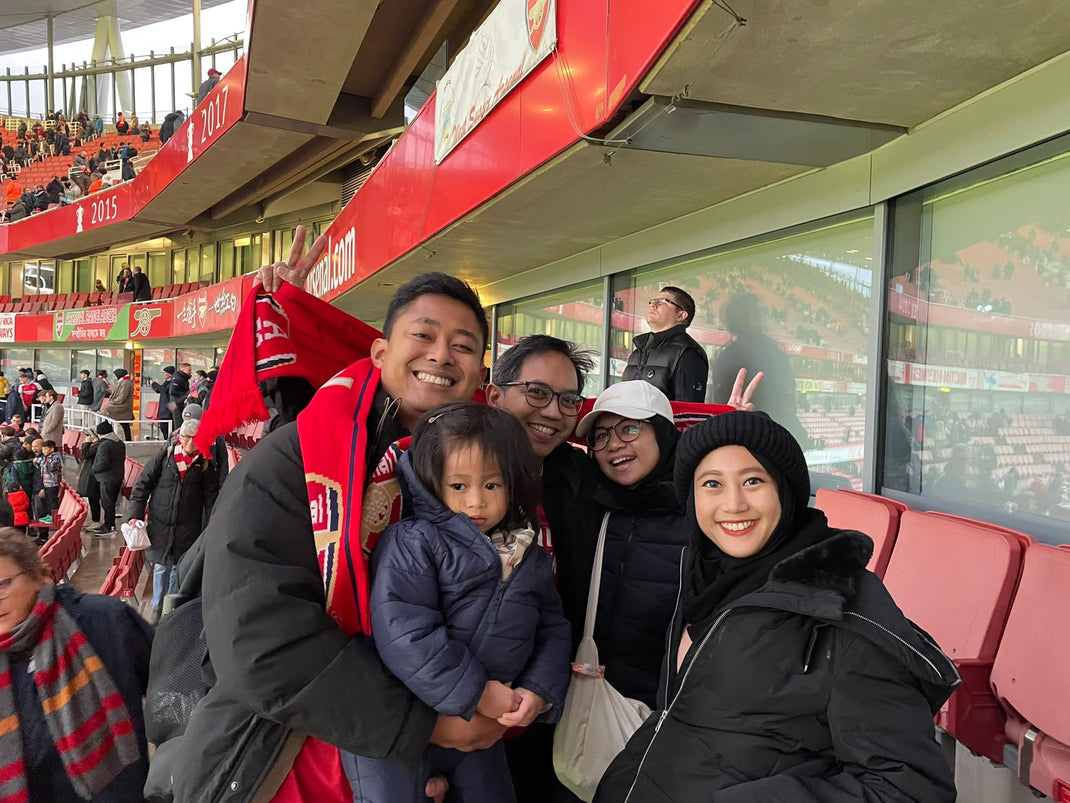
Emirates Experience
Discover the Emirates: Arsenal matches, VIP tours, and a deep dive into Gunners' football culture
Explore Experience
Stamford Bridge Experience
Explore Stamford Bridge: Get Chelsea tickets, behind-the-scenes tours, and feel the Blues' passion
Explore Experience






































